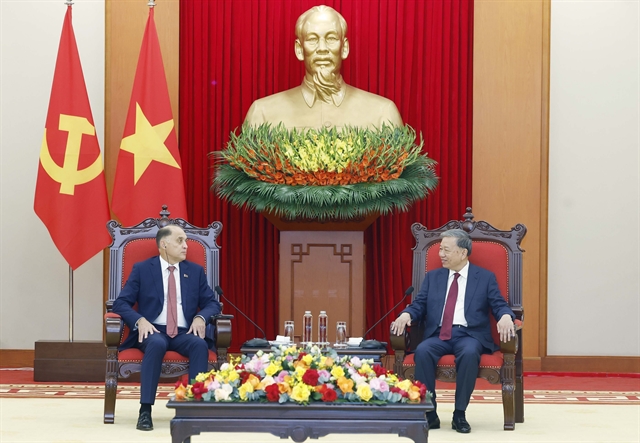 Brandinfo
Brandinfo
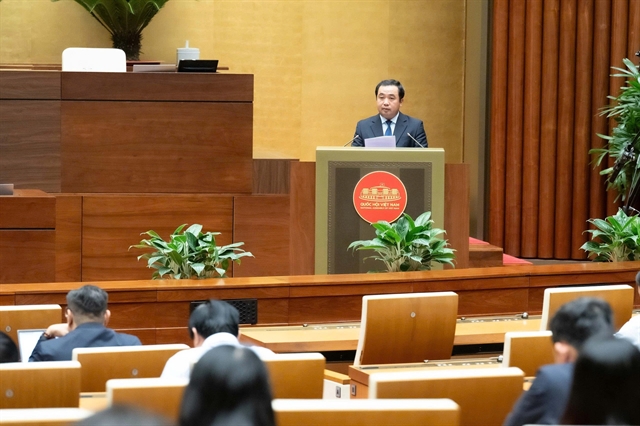
Ba Den Mountain - Tay Ninh Province
It is a two-hour drive from Ho Chi Minh City to Tay Ninh Province. Tay Ninh is primarily known for Ba Den Mountain, which is regarded as one of the sacred sites of Vietnam and is associated with a system of ancient temples and magnificent spiritual constructions on the mountain peak.
 |
| Ba Den Mountain - "The Highest Peak in Southern Việt Nam". Photo: Trần Tuấn Việt |
Ba Den Mountain has the highest altitude in Southern Vietnam at 986 metres and is known for its majestic scenery, often referred to as "The First Celestial Mountain." This popular healing destination offers a cool climate reminiscent of Dalat and a vibrant flower paradise that blooms throughout all four seasons on the mountain peak. Visitors to this mountain can experience a sense of tranquillity and shelter while admiring the temples associated with the legend of Linh Son Holy Mother—a sacred monument in the spiritual life of the Southern people.
What makes Ba Den Mountain famous among both domestic and international tourists is the presence of unique spiritual monumental constructions in the region and the world. At the highest peak of Ba Den Mountain stands the 72-metre-tall Tay Bo Da Son Buddha statue, which was cast from over 170 tons of red copper. It has been recognised by the Guinness World Records as the tallest bronze Buddha in Asia at the summit of a mountain. A photograph of the Tay Bo Da Son Buddha statue standing amidst clouds enveloping the "roof of Southern Vietnam" has won a prestigious global photography contest, making Ba Den Mountain a coveted destination for the global community.
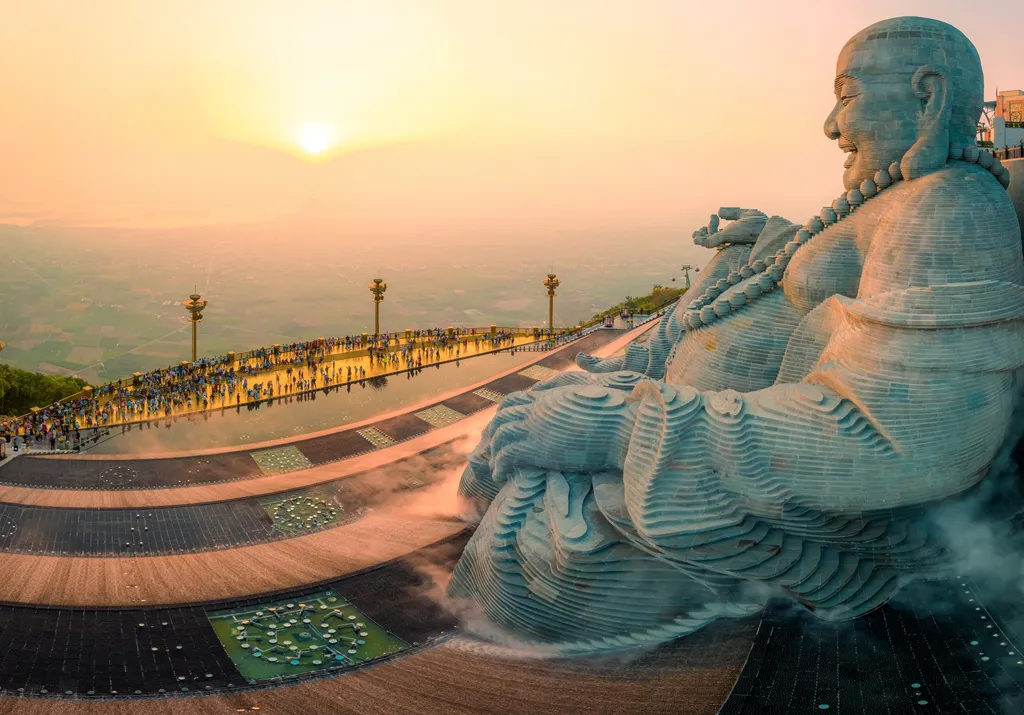 |
| Maitreya Bodhisattva Statue. Photo: Nguyen Minh Tu |
Located at the peak of Ba Den Mountain, the giant Maitreya Bodhisattva Statue stands 36 metres tall and weighs 5,112 tonnes. This impressive sculpture is composed of 6,688 natural sandstone blocks. Each of these selected stones is carefully checked for colour, veining, and precise dimensions before being sculpted, inspired by terraced fields. The meticulous construction process easily reminds people of how the ancient Egyptians built the pyramids, making Ba Den Mountain a must-visit destination for many in their lifetime.
Besides the magnificent Buddhist architectural masterpieces, Ba Den Mountain is also a sacred cultural destination. In particular, the lantern offering ceremony held every Saturday evening is a signature ritual with its own distinctive mark. Tourists have the chance to receive complimentary lanterns, write down their wishes on them, and join the crowd in practising the traditional rituals of lighting, offering, and releasing lanterns on the magical waters surrounding the Prajnaparamita pillar. Thousands of lanterns illuminating the virtual mountain resemble sparkling stars at the intersection of earth and sky, creating an unforgettable and magical experience for visitors to Ba Den Mountain.
Tan Lap Floating Village - Long An Province
Located about 100 km from Ho Chi Minh City, Tan Lap Floating Village is an attractive destination for tourists to explore the unique beauty of the Mekong Delta. The vast and picturesque landscape, along with the refreshing and pleasant atmosphere, not only attracts international tourists but also appeals to young people seeking a weekend getaway.
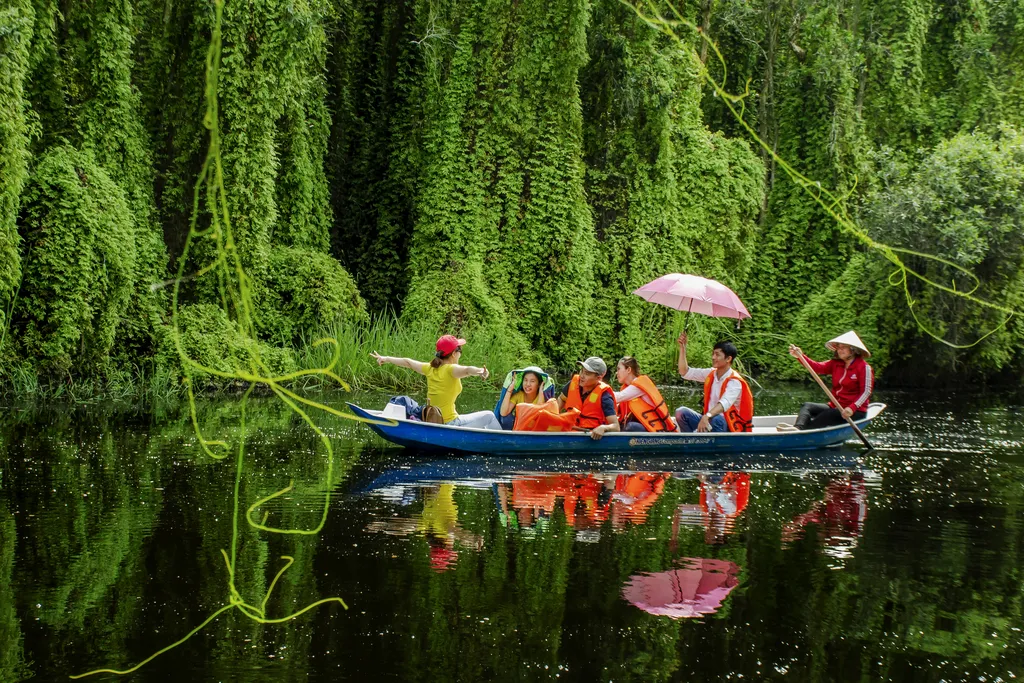 |
| Tan Lap Floating Village. Photo: dulichsolongan.vn |
The reason behind the name “floating village” is that this 135-hectare area is flooded all year round, so people have to build houses on high mounds to avoid flooding. When the water rises, the floors of the houses are also raised in accordance with the water level. Today, this area is no longer inhabited, as the village is undergoing urban planning to become an eco-tourism site.
The floating season runs from August to December, which is the most beautiful time of the year for tourists to enjoy the picturesque and peaceful beauty of Tan Lap Floating Village, with its fields of lotus flowers, water lilies, and the lush greenery of the mangrove forests.
Some fascinating activities here include taking a motorboat through the melaleuca forest, paddling a three-leaf boat to see the flooded rice fields, and cycling through the melaleuca forest to explore the diverse flora and fauna.
Cu Chi Tunnels
Located about 70 km northwest of Ho Chi Minh City, the Cu Chi Tunnels are popular for their legendary history involving the Vietnamese military and people, attracting the attention of international tourists.
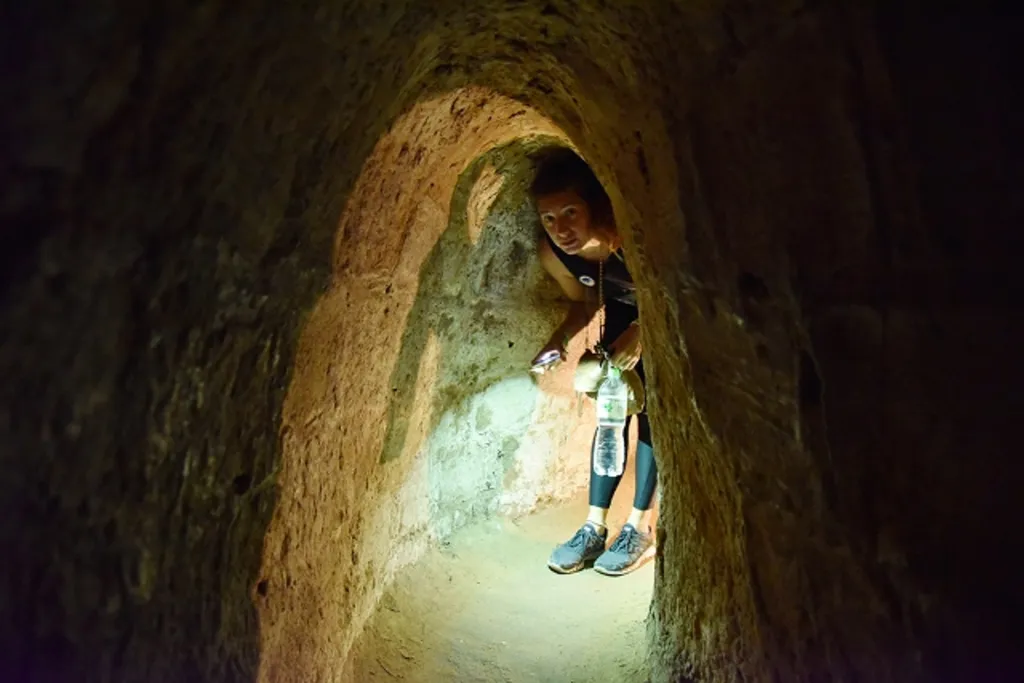 |
| Cu Chi Tunnels. Photo: vietnamtourism.gov.vn |
The tunnels are a miniature version of the transformative and creative battlefield map of the Cu Chi soldiers and people during the 30-year resistance war, making this place a unique wonder. The 250 kilometres of winding tunnels spread underground like spider's webs, giving tourists the feeling of stepping into a matrix. The "backbone" of the tunnels is divided into numerous branches, along with many interconnected structures such as bunkers, fighting positions, dining and sleeping areas, meeting rooms, living quarters, infirmaries, food storage rooms, water wells, and the Hoang Cam kitchen.
Alongside numerous historical sites in Ho Chi Minh City, such as Independence Palace, the Southern Central Office (Tay Ninh), and Phu Quoc Prison, the Cu Chi Tunnels are considered an unmissable destination for discovering the history, ingenuity, and resilience of the Vietnamese people during the war.

